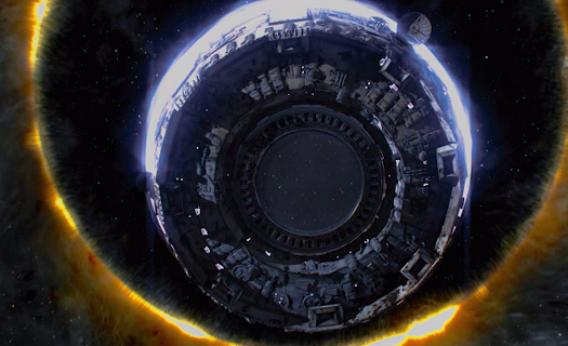Create a free profile to get unlimited access to exclusive videos, sweepstakes, and more!
Telescopes as Time Machines

One of the weirder concepts in astronomy is that telescopes are like time machines.
Light travels at a finite speed â itâs incredibly fast: 300,000 kilometers per second â but finite nonetheless. It takes a second or so for light to get from the Moon to Earth, eight minutes to reach us from the Sun, and over four years from the nearest known star. When you start talking cosmic distances, those numbers reach into the billions of years.
So when we use a telescope to look at some distant object, itâs as if weâre seeing it in the past. Itâs fun to think about, but eventually the obvious question arises: If I could travel out into space and look back at the Earth, would I be able to see it as it once was?
The answer is: No. You wouldnât be able to outrun the light the Earth is sending out now, so you can never see photons that left the Earth before you did.
But what if you could go faster than light? And then you could go out, say, hundreds of light years, turn around, and see the Earth as it was centuries ago?
Thatâs the premise of the lovely and melancholy short science fiction film, âTelescopeâ.
Interesting. I like how this was done; especially the spinning ring bit. Just a cool little bit of imagination. Incidentally, I was watching the end credits and noticed what looked like Orion and the Pleiades in the star field. They looked weird, distorted... and I wondered if they were changed to represent the stars as seen from 160 light years away from Earth. I sent a note to Collin Davis, who directed the movie. He told me they did indeed take a star catalog and change it, but just to make it âlook coolâ, and not to be accurate. Thatâs OK by me, but I wonder how many other people would notice?
Anyway, this idea of seeing into the past isnât new; for one thing it was done in the original Star Trek series episode âThe Squire of Gothosâ. That too is OK, though; not all ideas are new, but if theyâre told well and have something new to say, then itâs worth the effort. I thought âTelescopeâ evoked a solid emotion, and did it in an engaging, if bittersweet, way.
But is the premise possible? Stop me if youâve heard this before, but: No. The problem with faster-than-light travel (or FTL for us scifi dorks) is that physically itâs like being able to travel into the past, and thatâs a big no-no in physics. In this Universe, effect follows cause, and FTL travel would turn that on its head. The reasons behind this lie in the roots of relativity, and you can find explanations all over the web, at varying levels of headache-inducement (Sean Carroll has a technical page on it, Wikipedia has a simpler one, as well as one just on FTL, and you can find tons more with a simple search).
Mind you, FTL isnât like going faster than the speed of sound, which some folks used to claim was impossible. The problem there was an engineering issue, not a physical one; we knew things could travel faster than sound, itâs just that building a plane to do it is hard. In the case of FTL we run up against a barrier that has to do with the very fabric of the Universe and causality.
Not that I would rule it out entirely; I prefer to leave some wiggle room, even if only at the 0.0001 percent level. I want to think FTL is possible â to travel the stars, to see all the wonders of the Universe up close! â but I try not to let my desires interfere with my knowledge. That is the very opposite of how science, and reality, work.
But it does make for a nice story.
Tip oâ the dew shield to Janna OâShea.


























